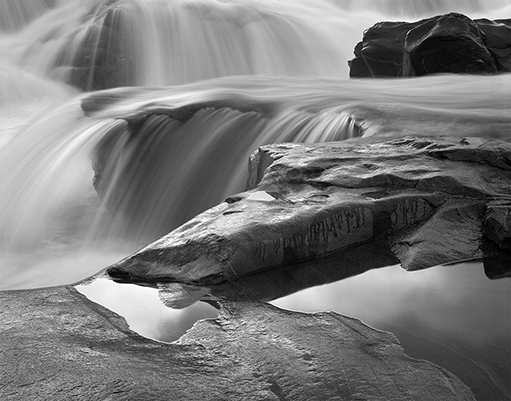The Widening Stream: Overview

Shelburne Falls MA, 1975
Creativity is a way of life and is not the exclusive domain of artists, writers, and scientists. It is the birthright of every human being. To live a full, productive, and satisfying life, and to make a meaningful contribution to others, one must discover and employ this most distinctive of human capacities: the ability to create.
Everyone wants to be creative. And all people can learn to awaken their artistic capabilities. Picasso said: "Every child is an artist. The problem is how to remain an artist once he grows up."Creativity is a way of life and is not the exclusive domain of artists, writers, and scientists. It is the birthright of every human being. To live a full, productive, and satisfying life, and to make a meaningful contribution to others, one must discover and employ this most distinctive of human capacities: the ability to create.
Many people long for the fulfillment of their creative potential. Yet reliable guidance is hard to find. Most books on the topic are scientific and dense or limited and incomplete. And many assert that the creative impulse cannot be taught, that it is inherent in some people and not in others.
The author of The Widening Stream believes that the full range of the creative process can be taught to those who wish to nourish and develop their artistic spirit. Distilled from thirty years of teaching art and the creative process, The Widening Stream inspires readers to develop their innate artistic abilities, achieve their goals, and find the courage and perseverance necessary to fulfill their creative aspirations. Organized around seven stages and three guiding principles of creativity, the book is designed as a unique guide to the creative process.
The Widening Stream fills a major gap in the available books on the topic. Its content is relevant to those already engaged in the arts and to all who are interested in forming a deeper relationship with their own talents and gifts. It is the first book that:
• Identifies and fully describes the seven stages of development of the creative process and three guiding principles of creativity
• Provides tools and exercises to assist readers in discovering and fulfilling each stage
• Provides a thorough yet accessible description of creativity as seen through the experiences of many innovative individuals
• Portrays the roles and responsibilities of the artist in society as an essential component of the creative process.
Anecdotal accounts and quotations from numerous artists, writers, and scientists enhance the text, helping to provide a broad and inspiring treatment of the topic.
The Widening Stream contains twelve chapters, divided into two parts. Part One is an exploration of the seven stages of development of the creative process as it unfolds through an individual’s work and discoveries. Part Two serves to elaborate on the creative impulse and gives three guiding principles drawn from the author’s long-standing investigation of the topic. At the close of each chapter in Part One is a section titled, Creative Practice, consisting of questions for self-examination and explicit tools, exercises, and suggestions to help readers achieve each step of the process.
The material found in The Widening Stream has struck a chord with many students and creative individuals, through reading the book, through visits to the author’s website, and through his frequent classes and workshops.